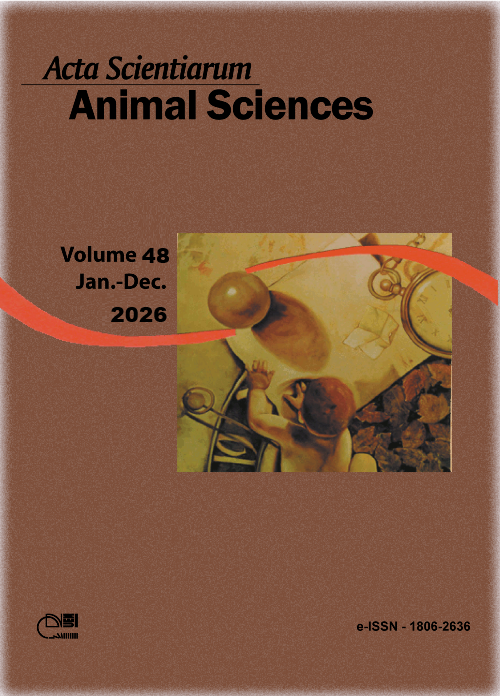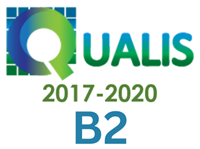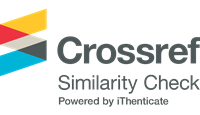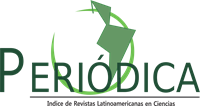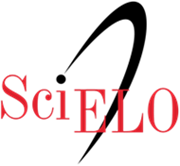Growth performance and economic evaluation of Leporinus lacustris fed different levels of crude protein
Resumo
The determination of optimal crude protein levels in fish diets is crucial due to its essential role in growth and its high cost. This study evaluated the effect of crude protein levels in the diet of piau corró Leporinus lacustris on growth performance, as well as the maximum technical and economic efficiency of this species. Juveniles of L. lacustris were distributed in 20 tanks, 20 L volume, density of six fish, and fed three times daily with 7% biomass. The design was completely randomized with four levels of crude protein (CP): 30, 34, 38, and 42%, and five replicates each. After 60 days of cultivation, the Fulton’s condition factor showed significant differences among treatments, fitting a quadratic regression model. Fish fed diets containing 34% CP exhibited better nutritional status. In contrast, the protein efficiency ratio (PER) followed a decreasing linear trend, with the best performance observed in fish fed 30% CP. Therefore, the diet with 30% crude protein can be recommended for L. lacustris juveniles at this stage of cultivation, as it is close to the optimal level for maximizing the species’ technical and economic efficiency.
Downloads
Referências
Acunha, R. M. G., Barros, A. F., Ferraz, A. L. J., & Campos, C. M. (2023). Avaliação econômica da lambaricultura em Aquidauana, MS, a partir de um estudo de caso. Agrarian, 16(56), 17244-17244. https://doi.org/10.30612/agrarian.v16i56.17244
Almeida, V. N. S. A., Carli, G. C., Satiro, T. M., Nascimento, T. M. T., & Takashashi, L. S. (2023). Digestible protein levels and metabolic responses in juvenile piapara (Megaleporinus obtusidens). Boletim do Instituto de Pesca, 49, 1-11. https://doi.org/10.20950/1678-2305/bip.2023.49.e754
Ahmed, I., & Ahmad, I. (2020). Effect of dietary protein levels on growth performance, hematological profile and biochemical composition of fingerlings rainbow trout, Oncorhynchus mykiss reared in Indian himalayan region. Aquaculture Research, 16, 100268. https://doi.org/10.1016/j.aqrep.2019.100268
Arlinghaus, R., Alós, J., Pieterek, T., & Klefoth, T. (2017). Determinants of angling catch of northern pike (Esox lucius) as revealed by a controlled whole-lake catch-and-release angling experiment—The role of abiotic and biotic factors, spatial encounters and lure type. Fisheries Research, 186(Part 3), 648-657. https://doi.org/10.1016/j.fishres.2016.09.009.
Bandeira, A. M., Leite, G. A., & Soares, L.S. (2024). Pesca artesanal no rio Turiaçu, Santa Helena–MA: registro de uma prática etnocultural. Revista Sapiência, 13(5), 319-338. https://doi.org/10.31668/5nbajg52
Bicudo, A. J. A., Sado, R. Y., & Cyrino, J. E. P. (2010). Growth performance and body composition of pacu Piaractus mesopotamicus (Holmberg 1887) in response to dietary protein and energy levels. Aquaculture Nutrition, 16(2), 213-222. https://doi.org/10.1111/j.1365-2095.2009.00653.x
Bittencourt, F., Feiden, A., Signor, A. A., Boscolo, W. R., & Freitas, J. M. A. (2010). Proteína e energia em rações para alevinos de piavuçu. Revista Brasileira de Zootecnia, 39(12), 2553-2559. https://doi.org/10.1590/S1516-35982010001200001
Bussons, I. N. B., Sousa, E., Aride, P. H. R., Duncan, W. L. P., Pantoja-Lima, J., Furuya, W. M., Oliveira, A. T., Bussons, M. R. F. M., & Faggio, C. (2021). Growth performance, hematological responses and economic indexes of Colossoma macropomum (Cuvier, 1818) fed graded levels of glycerol. Comparative Biochemistry and Physiology Part C: Toxicology & Pharmacology, 249, 109122. https://doi.org/10.1016/j.cbpc.2021.109122
Chiaravalloti, R. M., Catella, A., & Siqueira, A. L. (2022). Pesca profissional artesanal no Pantanal sul: histórico, manejo dos recursos e recomendações para a sustentabilidade. Biodiversidade Brasileira, 12(2), 1-15. https://doi.org/10.37002/biobrasil.v12i2.1987
Copatti, C. E., Souza, E. M., & Souza, R. C. (2022). Piau-verdadeiro Megaleporinus obstusidens (Valenciennes, 1837). In E. M. Souza, & D. F. Amaral (Eds.), Peixes do rio São Francisco: nativos, endêmicos e exóticos (pp. 66-72). Editora IFSertãoPE.
Feiden, A., Signor, A. A., Boscolo, W. R., Signor, A., & Reidel, A. (2009). Exigência de proteína de alevinos de piavuçú. Ciência Rural, 39(3), 859-865. https://doi.org/10.1590/S0103-84782008005000102
Fracalossi, D. M., & Cyrino, J. E. P. (2015). Nutriaqua: nutrição e alimentação de espécies de interesse para a aquicultura brasileira. Aquabio.
Froese, R. (2006). Cube law, condition factor and weight–length relationships: history, meta-analysis and recommendations. Journal of Applied Ichthyology, 22(4), 241-253. https://doi.org/10.1111/j.1439-0426.2006.00805.x
Froese, R., & Pauly, D. (2023). FishBase. https://www.fishbase.org
Han, D., Shan, X., Zhang, W., Chen, Y., Wang, Q., Li, Z., Zhang, G., Xu, P., Li, J., Xie, S., Mai, K., Tang, Q., & Silva, S. S. (2018). A revisit to fishmeal usage and associated consequences in Chinese aquaculture. Reviews in Aquaculture, 10(2), 493-507. https://doi.org/10.1111/raq.12183
Hua, K., Suwendi, E., & Bureau, D. P. (2019). Effect of body weight on lysine utilization efficiency in Nile Tilapia (Oreochromis niloticus). Aquaculture, 505, 47-53. https://doi.org/10.1016/j.aquaculture.2019.02.030
Jisr, N., Younes, G., Sukhn, C., & El-Dakdouki, M. H. (2018). Length-weight relationships and relative condition factor of fish inhabiting the marine area of the Eastern Mediterranean city, Tripoli-Lebanon. Egyptian Journal of Aquatic Research, 44(4), 299-305. https://doi.org/10.1016/j.ejar.2018.11.004
Kubitza, F. (2013). Qualidade da água no cultivo de peixes e camarões. Kubitza
Le Cren, E. D. (1951). The length-weight relationship and seasonal cycle in gonadal weight and condition in the perch, Perca luviatilus. Journal of Animal Ecology, London, 20(2), 201-219. http://dx.doi.org/10.2307/1540.
Lubich, C., Siqueira-Souza, F., Batista, G., & Freitas, C. (2024). Spatial distribution of the sport fishing in the state of Amazonas, northern Brazil. Brazilian Journal of Biology, 84, e282905. https://doi.org/10.1590/1519-6984.282905
Ministério da Pesca e Aquicultura (2023). Cartilha da pesca amadora e esportiva. Ministério da Pesca e Aquicultura. https://www.gov.br/mpa/pt-br/assuntos/pesca/pesca-amadora-e-esportiva/cartilha-arte-1.pdf.
National Research Council. (2011). Nutrient requirements of fish and shrimp. National Academies Press.
Nicholson, W., & Snyder, C. M. (2016). Microeconomic theory: basic principles and extensions. Cengage Learning.
Nguyen, H.Y. N., Trinh, T. L., Baruah, K., Lundh, T., & Kiessling, A. (2021). Growth and feed utilisation of Nile tilapia (Oreochromis niloticus) fed different protein levels in a clear-water or biofloc-RAS system. Aquaculture, 536, 736404. https://doi.org/10.1016/j.aquaculture.2021.736404
Nyboer, E. A., Embke, H. S., Robertson, A. M., Arlinghaus, R., Bower, S., Baigun, C., Beard, D., Cooke, S. J., Cowx, I. G., Koehn, J. D., Lyach, R., Milardi, M., Potts, W., & Lynch, A. J. (2022). Overturning Stereotypes: The Fuzzy Boundary Between Recreational and Subsistence Inland Fisheries. Fish and Fisheries, 23(6), 1282-298. https://doi.org/10.1111/faf.12688
Paula, G. H., Calabresi, G. E., Boff, J. E. D., Figueiredo, L. P., Fonseca, C., Coldebella, A., Reidel, A., & Signor, A. A. (2020). Manejo alimentar de piavuçu (Leporinus macrocephalus) na fase inicial de cultivo. Brazilian Journal of Development, 6(7), 53053-53065. https://doi.org/10.34117/bjdv6n7-813
Pezzato, L. E., Barros, M. M., Pezzato, A. C., Miranda, E. C., Quintero, P. G. L., & Furuya, W. M. (2000). Relación energía: proteína en la nutrición de alevinos de piacu (Leporinus macrocephalus). Revista de la Facultad de Medicina Veterinaria y de Zootecnia, 47(2), 2-6.
Portz, L., & Furuya, W. M. (2013). Energia, proteína e aminoácidos. In D. Fracalossi, J. E. Cyrino (Eds.), Nutriaqua:nutrição e alimentação de espécies de interesse para a aquicultura brasileira (1. ed., pp. 65-77). Aquabio.
Pires, D. C., Bezerra, G. A., Souza, E. G. C., Castro, P. L., Acunha, R. M. G., & Campos, C. M. (2025). Economic and financial analysis of live bait production of curimba: a case study. Ciência Animal Brasileira, 26, 80319E. https://doi.org/10.1590/1809-6891v26e-80319E
R Core Team. (2024). R: A Language and Environment for Statistical Computing. R Foundation for Statistical Computing.
Santos, E. L., Oliveira, W. D. S., Soares, E. C., Lima, M. R., Silva, L. L. A., Machado, S. S., Silva, J. M., Silva, C. F., & Silva, F. F. (2018). Exigência de proteína bruta para juvenis de curimatã-pacu. Arquivo Brasileiro de Medicina Veterinária e Zootecnia, 70(3), 921-930. https://doi.org/10.1590/1678-4162-9872
Sebrae. (2021). Planejamento pode contribuir para o aumento da pesca esportiva. https://sebrae.com.br/sites/PortalSebrae/conteudos/posts/planejamento-pode-contribuir-para-o-aumento-da-pescaesportiva
Sidlauskas, B. L., Assega, F. M., Melo, B. F., Oliveira, C., & Birindelli, J. L. (2022). Total evidence phylogenetic analysis reveals polyphyly of Anostomoides and uncovers an unexpectedly ancient genus of Anostomidae fishes (Characiformes). Zoological Journal of the Linnean Society, 194(2), 626-669. https://doi.org/10.1093/zoolinnean/zlab016
Silva, D. J., & Queiroz, A. C. (2002). Análise de alimentos: métodos químicos e biológicos. Editora UFV.
Signor, A. A., Buglione Neto, C. C., Figueiredo, E. F., Signor, F. R. P., Watanabe, A. W., Ferreira, H. K. A., & Reidel, A. (2020). Manejo alimentar de juvenis de jundia (Rhamdia quelen) cultivado em tanques-rede: tipos de rações, taxas de arraçoamento e estratégia alimentar. Brazilian Journal of Development, 6(7), 48531-48546. https://doi.org/10.34117/bjdv6n7-483
Sousa, W. B. B., Diniz, M. B. G., Souza, E. A., & Soares, C. B. D. (2024). Levantamento das espécies de peixes da família Anostomidae na região Nordeste do Brasil. In W. B. B. Sousa, M. F. B. G. Diniz, A. C. Sousa, A. T. S. Lima, A. J. F. Lopes, J. R. L. Silva, C. B. D. Soares, D. F. Antunes, B. M. Alcântara, T. S. D. Viração, A. J. M. Bento, S. M. Santos, J. C. X. Nunes, M. D. C. Martins, & J. A. O. Borges (Orgs.), Explorando a biodiversidade e desafios epidemiológicos no Nordeste brasileiro (pp. 76-85). Editora Omnis Scientia.
Vazzoler, A. E. A. M. (1996). Biologia da reprodução de peixes teleósteos: teoria e prática. Nupélia.
Volkoff, H., & London, S. (2018). Nutrition and reproduction in fish. Encyclopedia of Reproduction, 6, 743-748. https://doi.org/10.1016/B978-0-12-809633-8.20624-9
Ye, G., Dong, X., Yang, Q., Chi, S., Liu, H., Zhang, H., Tan, B., & Zhang, S. (2020). Low-gossypol cottonseed protein concentrate used as a replacement for fishmeal for juvenile hybrid grouper (Epinephelus fuscoguttatus♀× Epinephelus lanceolatus♂): effects on growth performance, immune responses, and intestinal microbiota. Aquaculture, 524,735309. https://doi.org/10.1016/j.aquaculture.2020.735309
Wang, J., Jiang, Y., Li, X., Han, T., Yang, Y., Hu, S., & Yang, M. (2016). Dietary protein requirement of juvenile red spotted grouper (Epinephelus akaara). Aquaculture, 450, 289-294.
Copyright (c) 2026 Fulvia Cristina Oliveira, Fayane do Espírito Santo, Rubia Mara Acunha, André Luiz Julien Ferraz, Robson Andrade Rodrigues, André Rozemberg Peixoto Simões, Cristiane Meldau de Campos

This work is licensed under a Creative Commons Attribution 4.0 International License.
DECLARAÇÃO DE ORIGINALIDADE E DIREITOS AUTORAIS
Declaro que o presente artigo é original, não tendo sido submetido à publicação em qualquer outro periódico nacional ou internacional, quer seja em parte ou em sua totalidade.
Os direitos autorais pertencem exclusivamente aos autores. Os direitos de licenciamento utilizados pelo periódico é a licença Creative Commons Attribution 4.0 (CC BY 4.0): são permitidos o compartilhamento (cópia e distribuição do material em qualqer meio ou formato) e adaptação (remix, transformação e criação de material a partir do conteúdo assim licenciado para quaisquer fins, inclusive comerciais.
Recomenda-se a leitura desse link para maiores informações sobre o tema: fornecimento de créditos e referências de forma correta, entre outros detalhes cruciais para uso adequado do material licenciado.




